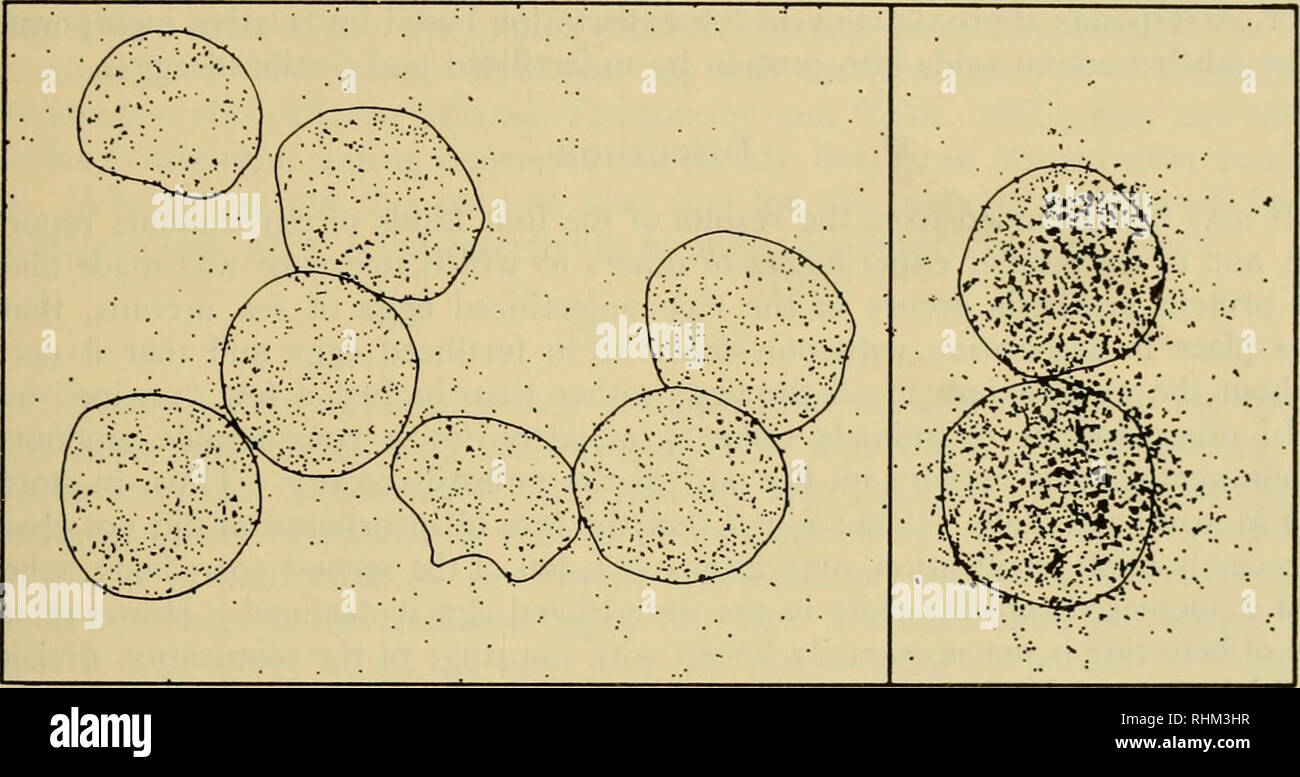. The Biological bulletin. Biology; Zoology; Marine biology. PROTEIN SYNTHESIS IN SEA URCHIN EGGS 215 activity from the polysome region to the monoribosome region of the gradient after RNase-treatment of the homogenates, particularly of the fertilized eggs; also, pre- treatment with RNase-free trypsin has sensitized the unfertilized egg aggregates to dissociation by RNase. 4. Autoradiography of unfertilised eggs The presence of labeled protein in unfertilized sea urchin eggs that had been exposed to radioactive amino acids has been demonstrated autoradiographically in previous investigations (

Image details
Contributor:
Library Book Collection / Alamy Stock PhotoImage ID:
RHM3HRFile size:
7.1 MB (308.3 KB Compressed download)Releases:
Model - no | Property - noDo I need a release?Dimensions:
2173 x 1150 px | 36.8 x 19.5 cm | 14.5 x 7.7 inches | 150dpiMore information:
This image is a public domain image, which means either that copyright has expired in the image or the copyright holder has waived their copyright. Alamy charges you a fee for access to the high resolution copy of the image.
This image could have imperfections as it’s either historical or reportage.
. The Biological bulletin. Biology; Zoology; Marine biology. PROTEIN SYNTHESIS IN SEA URCHIN EGGS 215 activity from the polysome region to the monoribosome region of the gradient after RNase-treatment of the homogenates, particularly of the fertilized eggs; also, pre- treatment with RNase-free trypsin has sensitized the unfertilized egg aggregates to dissociation by RNase. 4. Autoradiography of unfertilised eggs The presence of labeled protein in unfertilized sea urchin eggs that had been exposed to radioactive amino acids has been demonstrated autoradiographically in previous investigations (Baltus, Quertier, Ficq and Brachet, 1965; Piatigorsky, . Figure 3. Exposed grains on autoradiographs of sections of 7 unfertilized (left) and 2 fertilized (right) eggs of Lytechinus pictus. The unfertilized eggs were incubated at 20° C. in sea water containing C"-i-arginine (234 c/M), C"-l-glutamic acid (195 c/M), C"-l-valine (195 c/M) and C"-l-proline (186 c/M), each at 1 fic./m., for 60 minutes, fixed in Carnoy's solution, sectioned at 10 microns, coated with Kodak NTB3 emulsion, and developed after eight weeks storage at 4° C. The fertilized eggs were incubated in the same C"-amino acid for 30 minutes at 10 minutes after insemination and the emulsion developed after two weeks storage. Ozaki and Tyler, 1967), but the question under consideration here is whether this refers to all of the eggs or only a few. In a recent paper Epel (1967) mentions that an autoradiographic examination of unfertilized sea urchin eggs exposed to H"-amino acids, showed all to be labeled. Similarly MacKintosh and Bell (1967) state that all examined eggs were labeled in their autoradiographic study. The present results confirm these statements. Samples of unfertilized and of fertilized eggs of Lytechinus pictus that had been at 0' C. added 0.03 ml. of 5% sodium deoxycholate to each tube and layered the contents on 15-30% sucrose gradients, with 0.4 ml. cushion of 60%, a